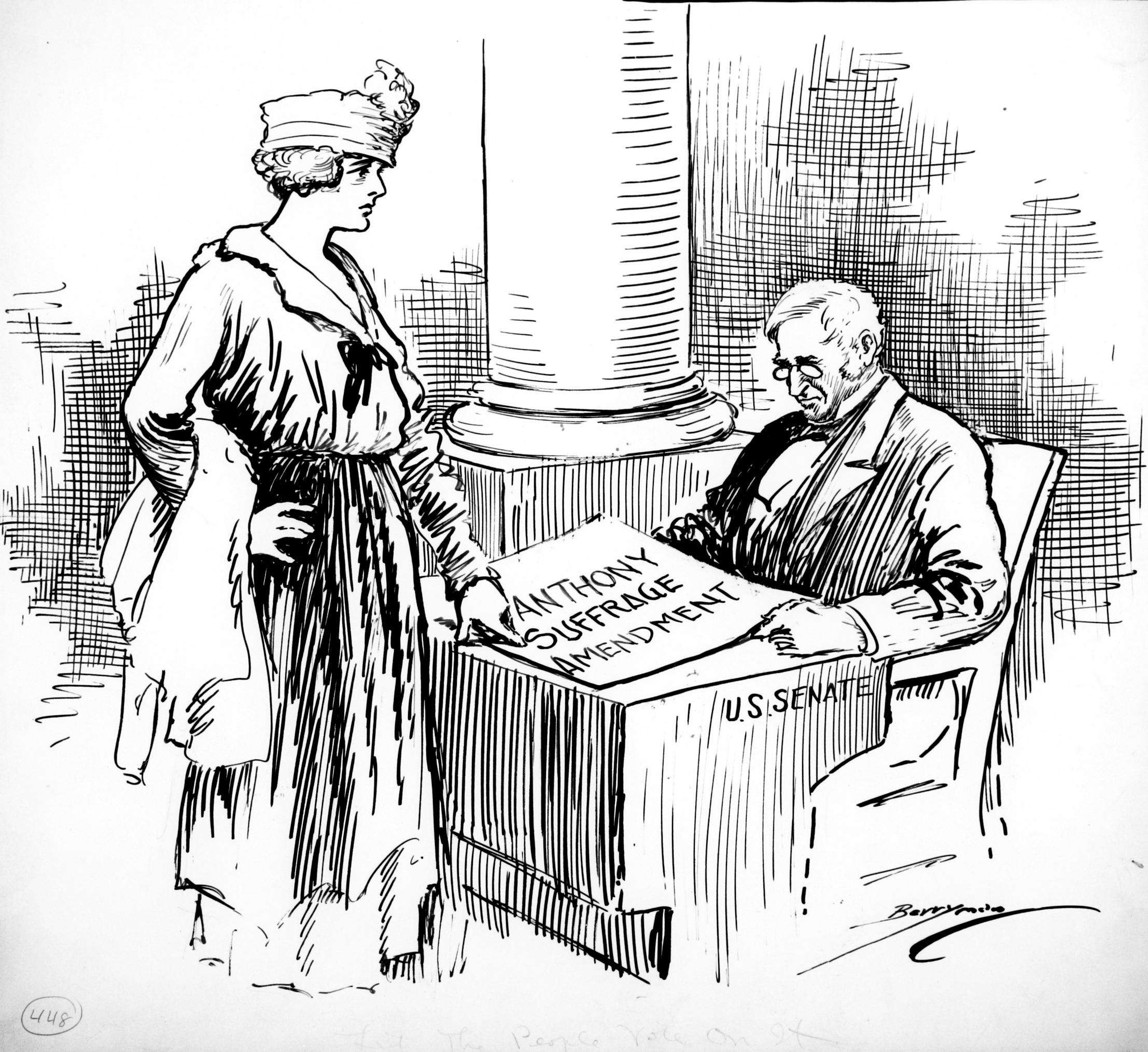The Amendment Process: Ratifying the 19th Amendment
Finding a Sequence
All documents and text associated with this activity are printed below, followed by a worksheet for student responses.Introduction
You will learn the steps involved in creating a Constitutional amendment by analyzing documents related to the 19th Amendment. This amendment – popularly known as the women's suffrage amendment – prohibited the Federal Government or states from denying the right to vote based on sex.First, click "Show Hints" to reveal the steps of the amendment process. Then analyze each document to determine which step of the amendment process was taking place when the document was created. Click on the orange "new window" icon to read each document more closely. Once you've figured out what step each document represents, drag it to the appropriate box to arrange the documents in the proper sequence. Then click on "When You're Done," where you will need to use what you learned by analyzing the documents to answer questions.
Name:
Class:
Class:
Worksheet
The Amendment Process: Ratifying the 19th Amendment
Finding a Sequence
Examine the documents in this activity. Put the corresponding document numbers in order using the list below. Write your conclusion response in the space provided.1
2
3
4
5
6
Hints for this Activity
- Desire for an amendment is voiced (writing to representatives)
- Desire for an amendment is voiced (protesting)
- Bill is introduced in Congress & referred to committee; full chamber votes; it passes if 2/3 vote yes
- Process is repeated in other chamber of Congress
- Each chamber votes again and both chambers pass a joint resolution
- Once 3/4 of states vote to ratify, the amendment is added to the Constitution
1
Activity Element
Nineteenth Amendment to the United States Constitution
Page 1
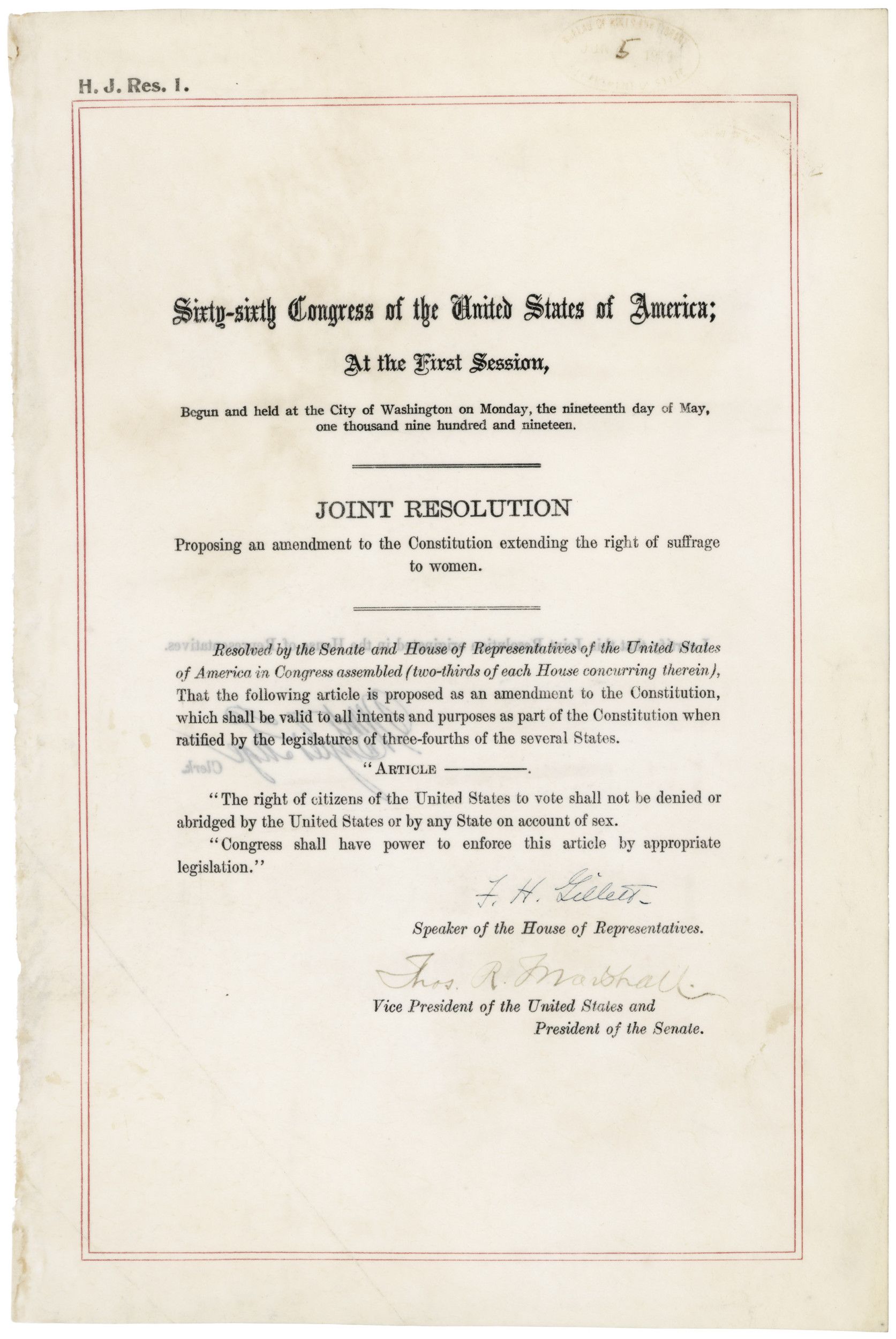
2
Activity Element
Let the People Vote on it
Page 1
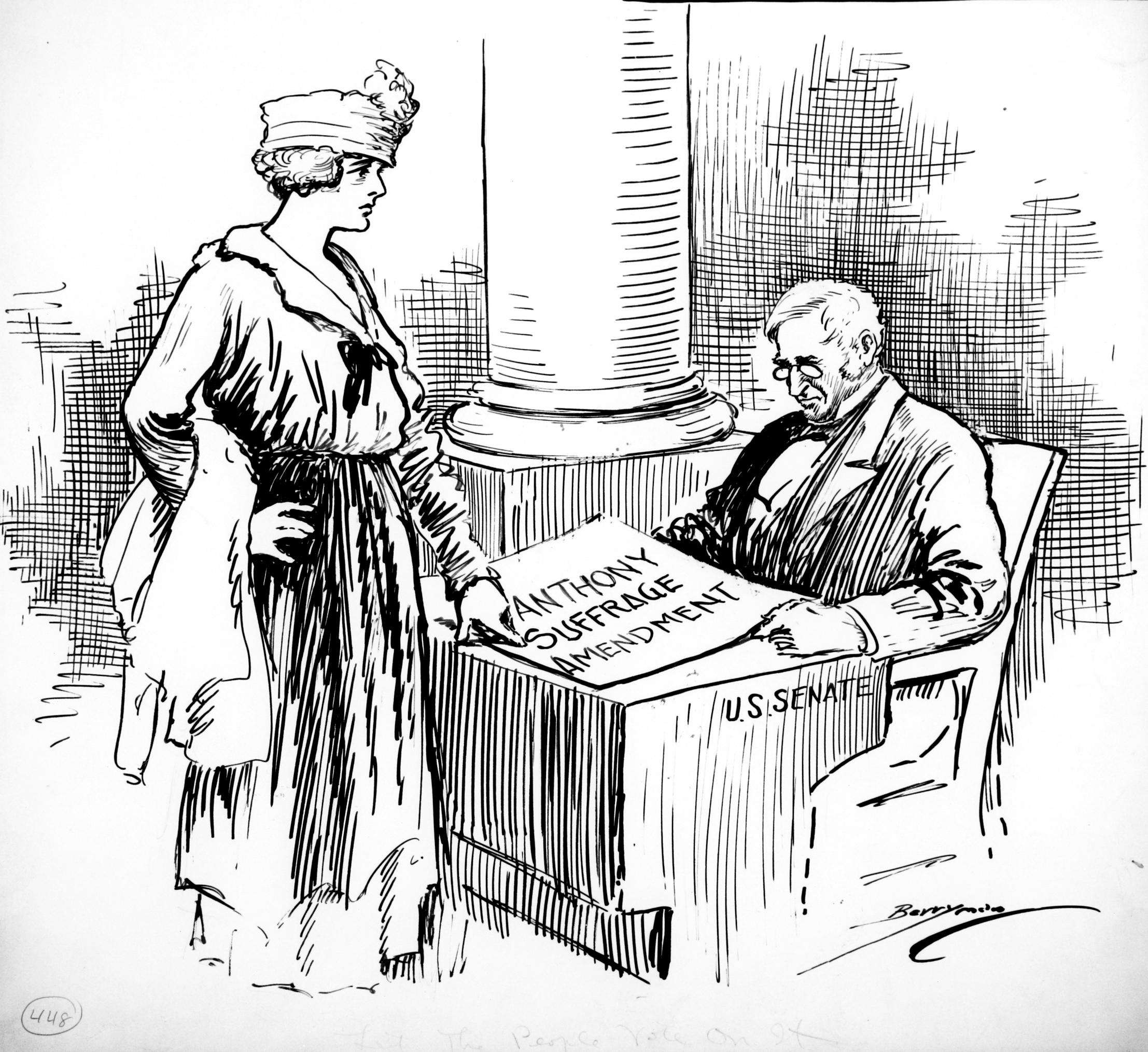
3
Activity Element
Woman Suffrage in Washington, District of Columbia, Suffragette Banner
Page 1
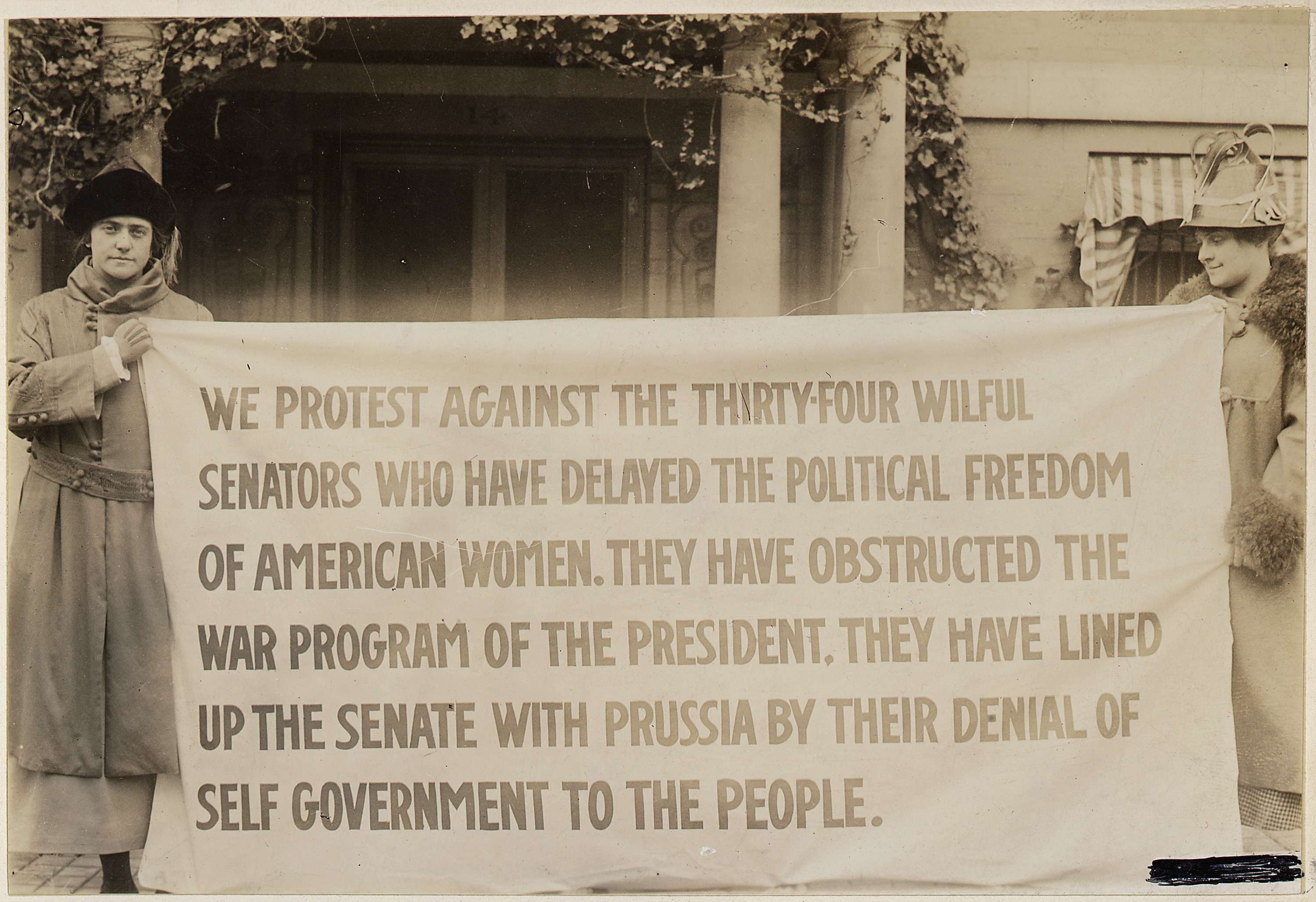
4
Activity Element
Letter to Edwin Webb from Pauline Adams Urging Passage of the Susan B. Anthony Amendment
Page 1

5
Activity Element
House Joint Resolution 1 Regarding the 19th Amendment
Page 1
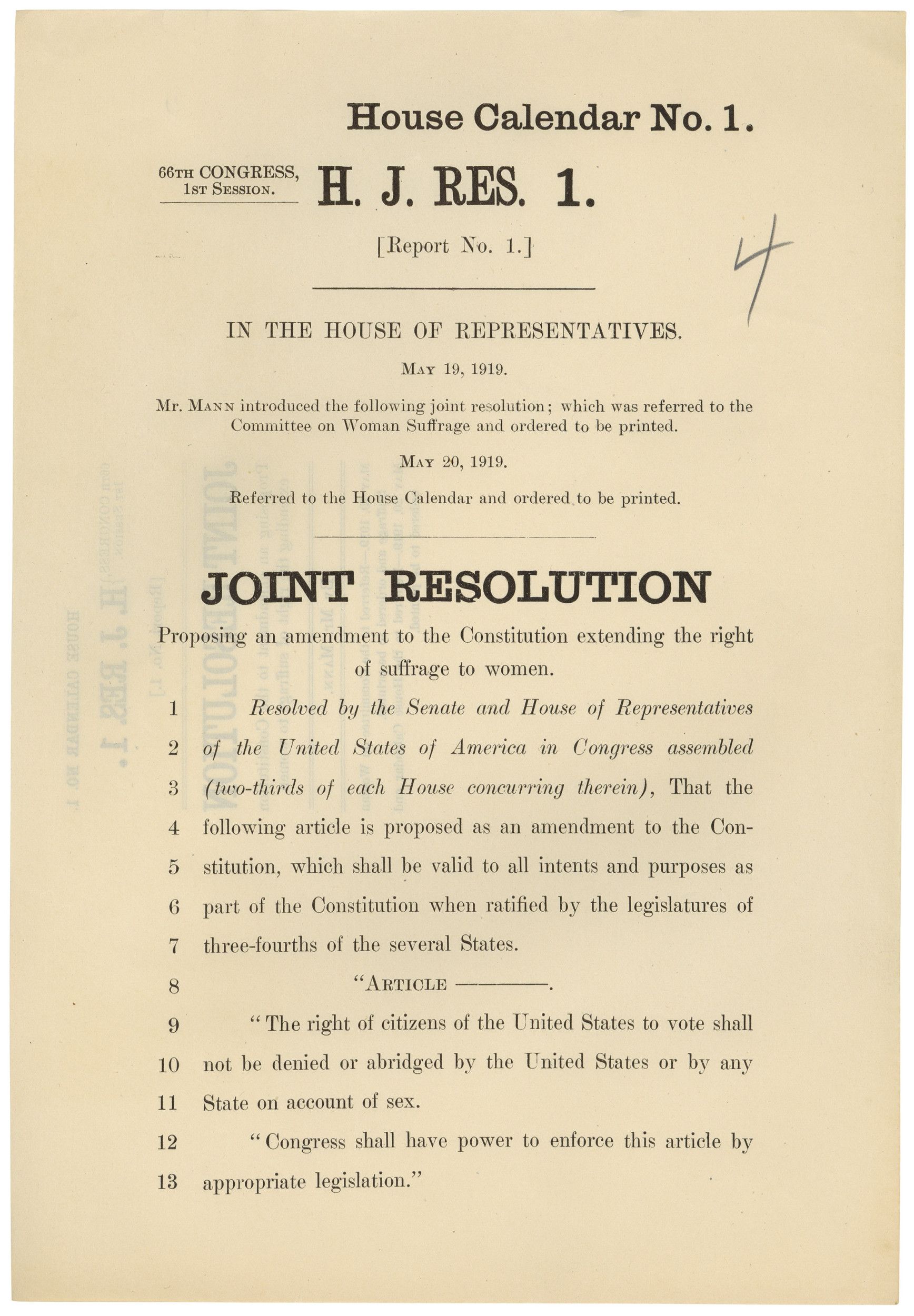
6
Activity Element
Tennessee`s Ratification of the 19th Amendment
Page 2

Conclusion
The Amendment Process: Ratifying the 19th Amendment
Finding a Sequence
Now that you know the steps in the amendment process, answer the following in preparation for a class discussion:- Explain how the amendment process demonstrates representative democracy. How are the people and their representatives involved?
- What is the role of the President in the amendment process?
- What role do the states play in the amendment process? Do all states need to be involved?
- Under what circumstances do you think Congress would propose a Constitutional amendment instead of passing legislation? How is an amendment different from a law?
- Since the Constitution went into effect in 1789, there have been over 11,000 attempts to amend it. But only 27 of those were eventually ratified. What makes the amendment process difficult to complete? Why do you think the framers of the Constitution made it so difficult?
Your Response
Document
Letter to Edwin Webb from Pauline Adams Urging Passage of the Susan B. Anthony Amendment
Page 1
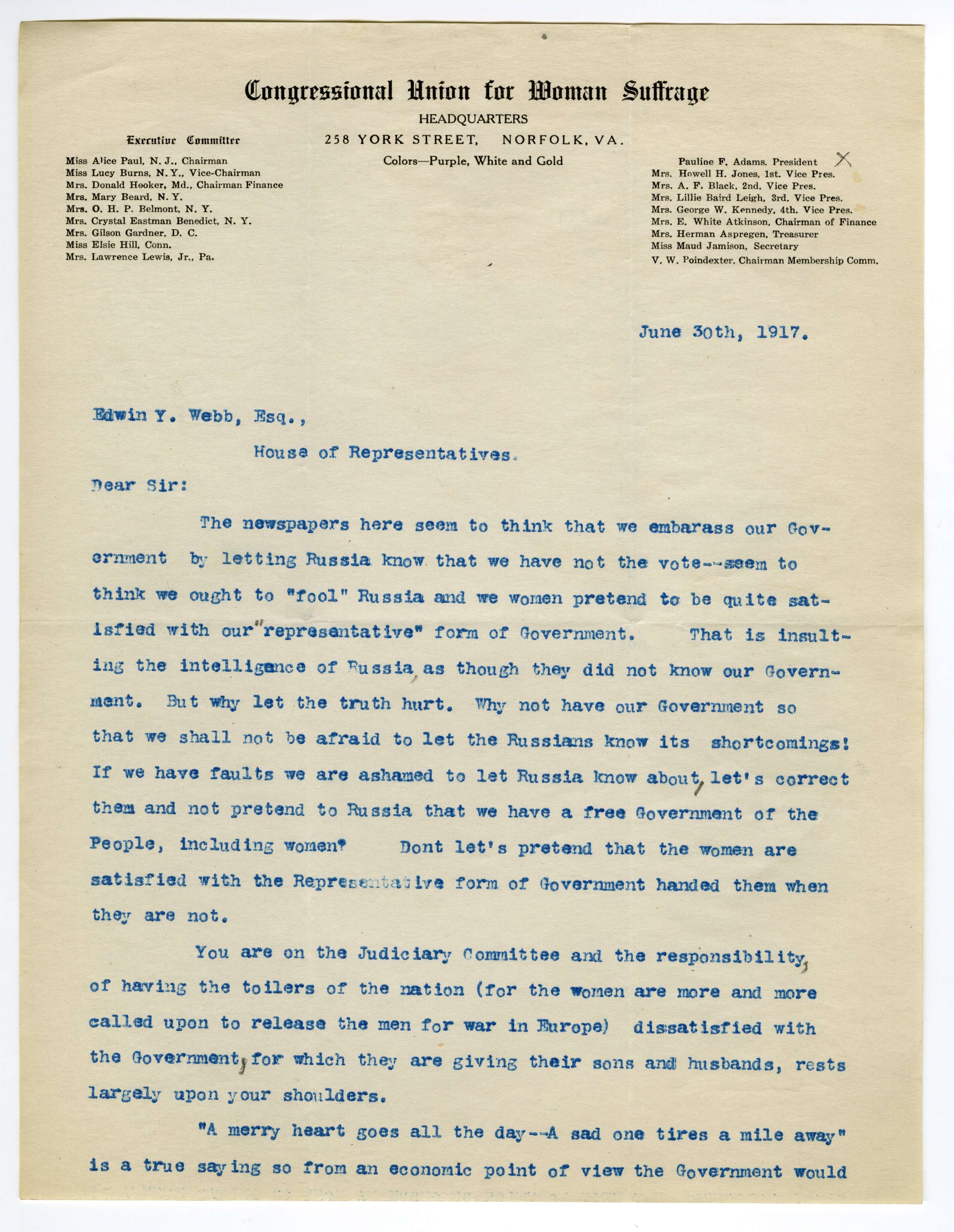
Letter to Edwin Webb from Pauline Adams Urging Passage of the Susan B. Anthony Amendment
Page 2
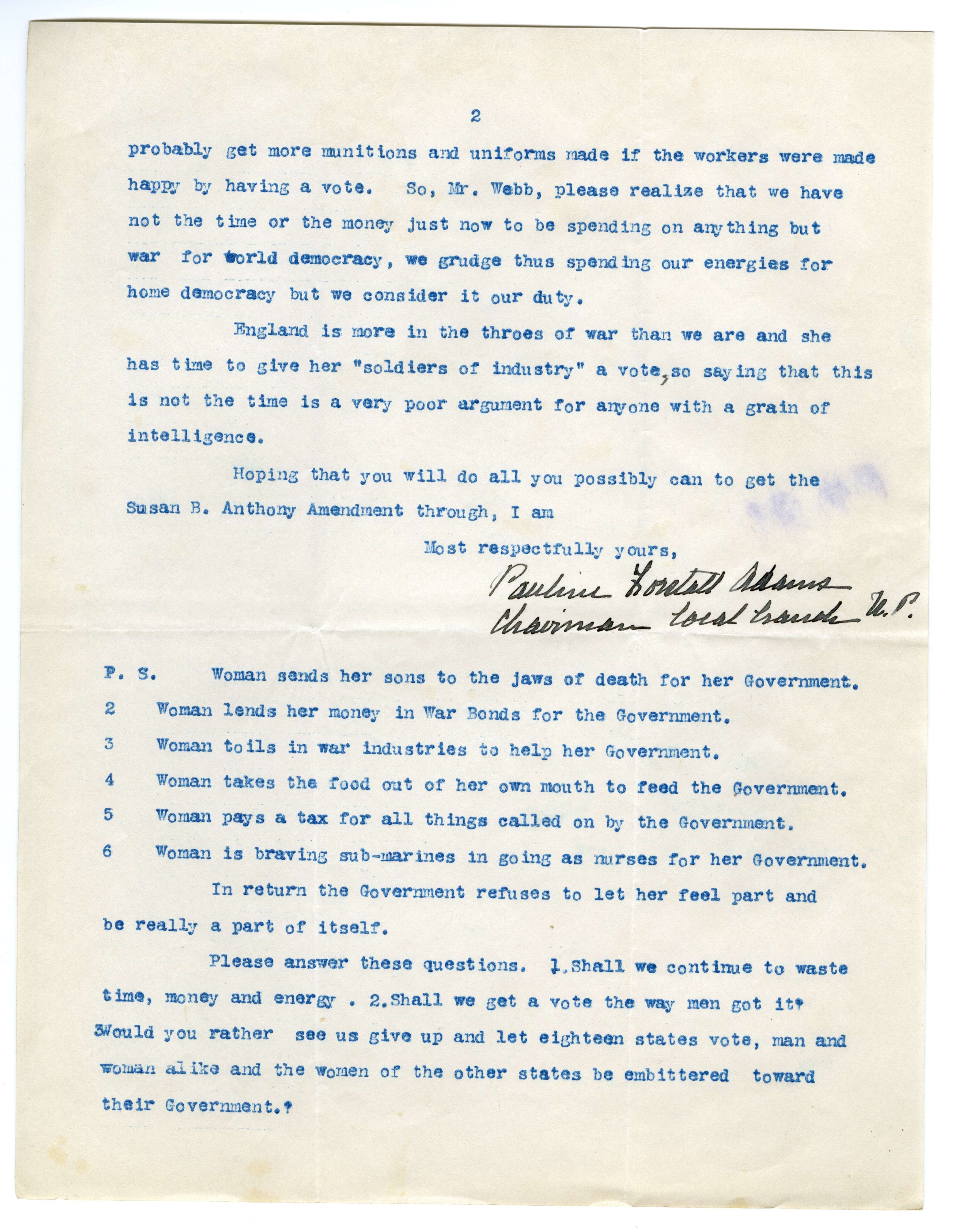
Document
Tennessee's Ratification of the 19th Amendment
Page 2
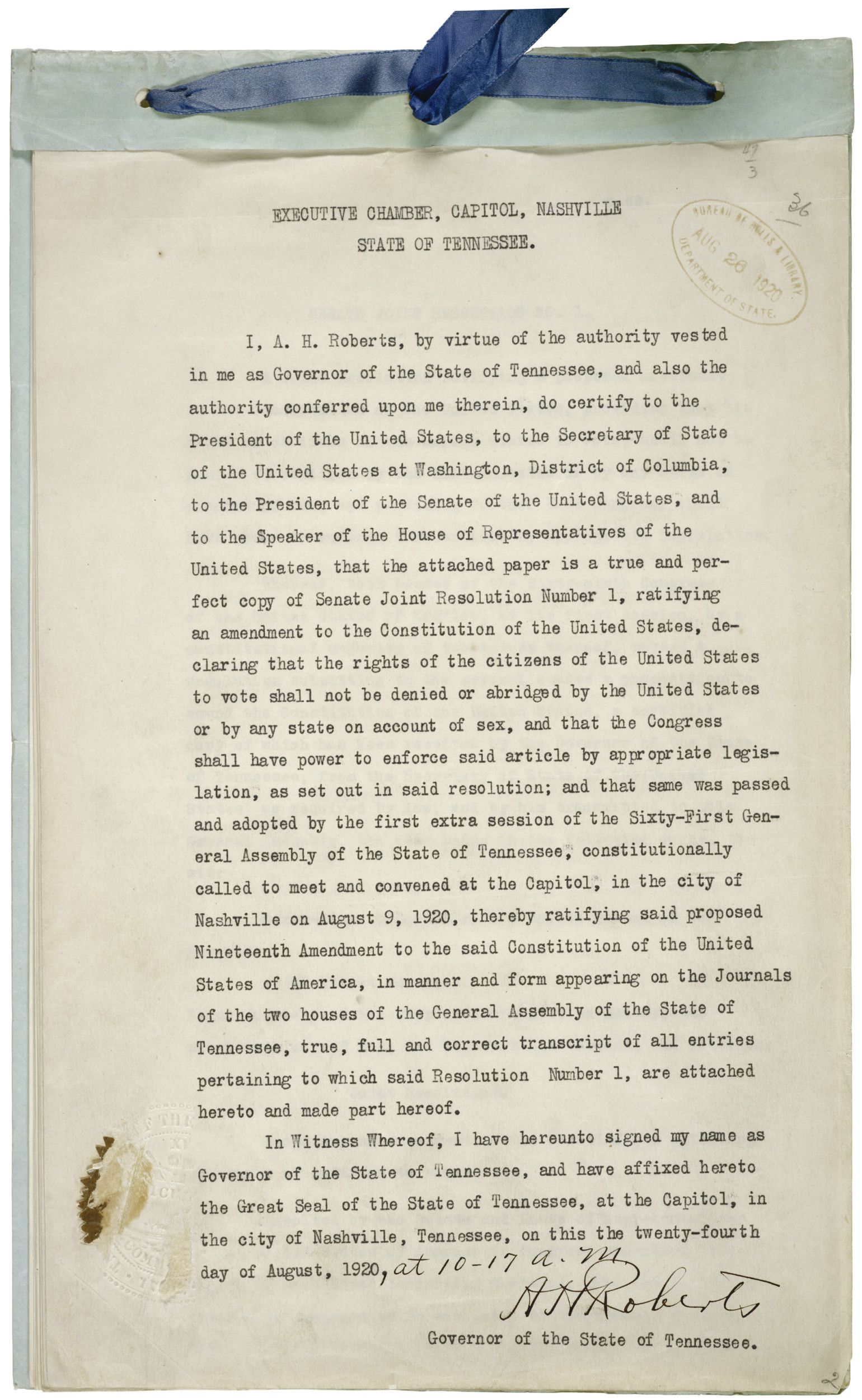
Document
Nineteenth Amendment to the United States Constitution
Page 1
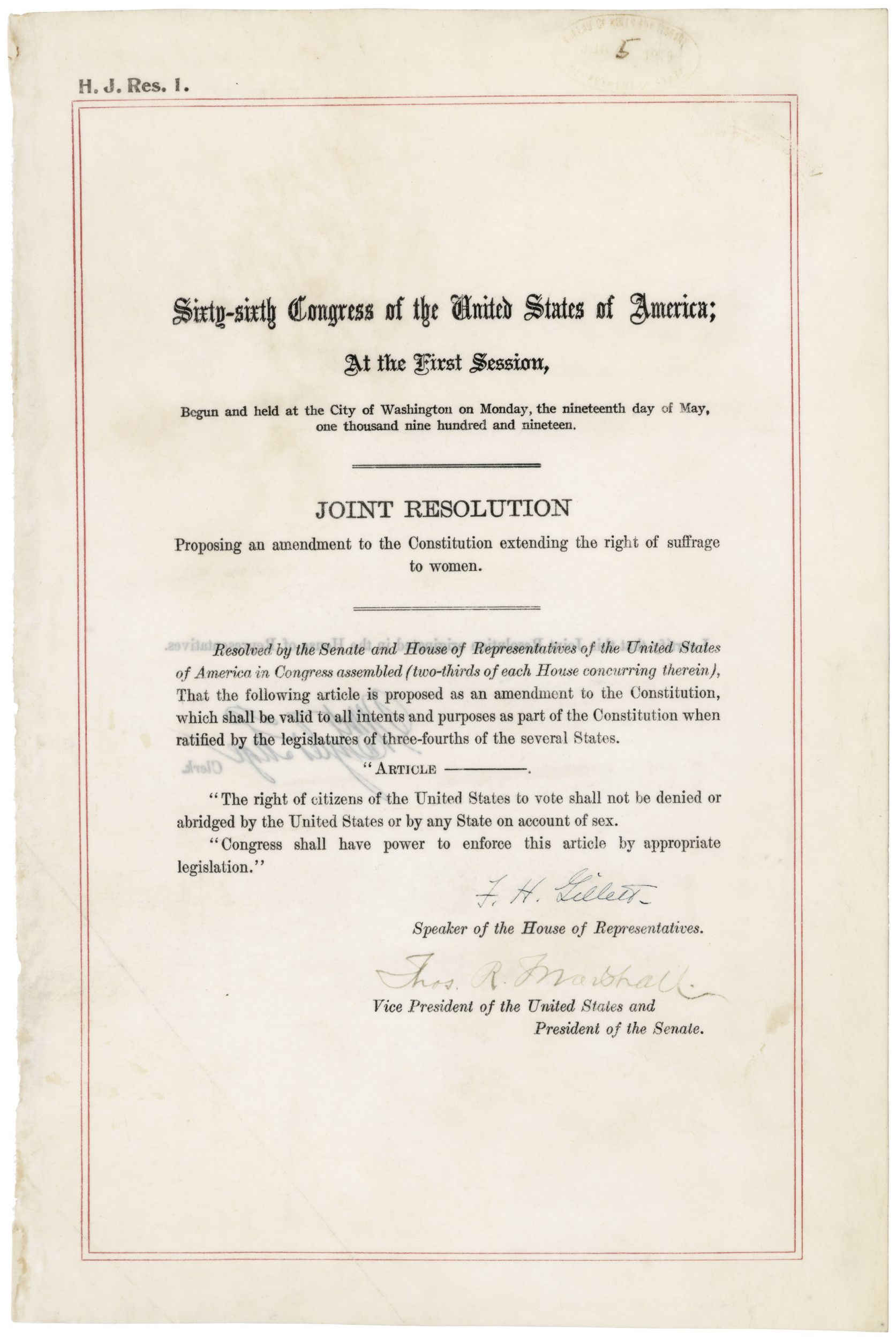
Document
Woman Suffrage in Washington, District of Columbia, Suffragette Banner
Page 1
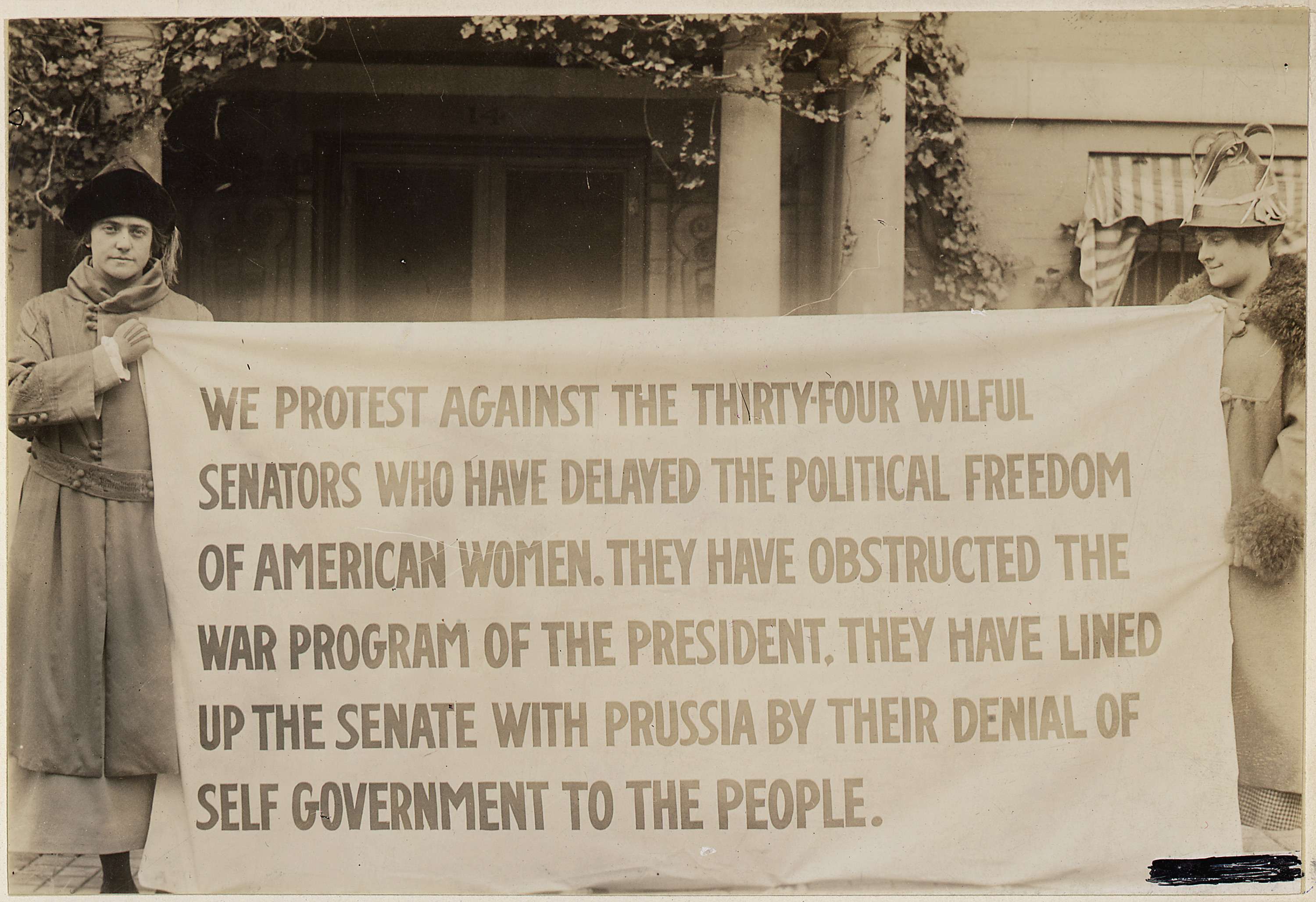
Document
House Joint Resolution 1 Regarding the 19th Amendment
Page 1
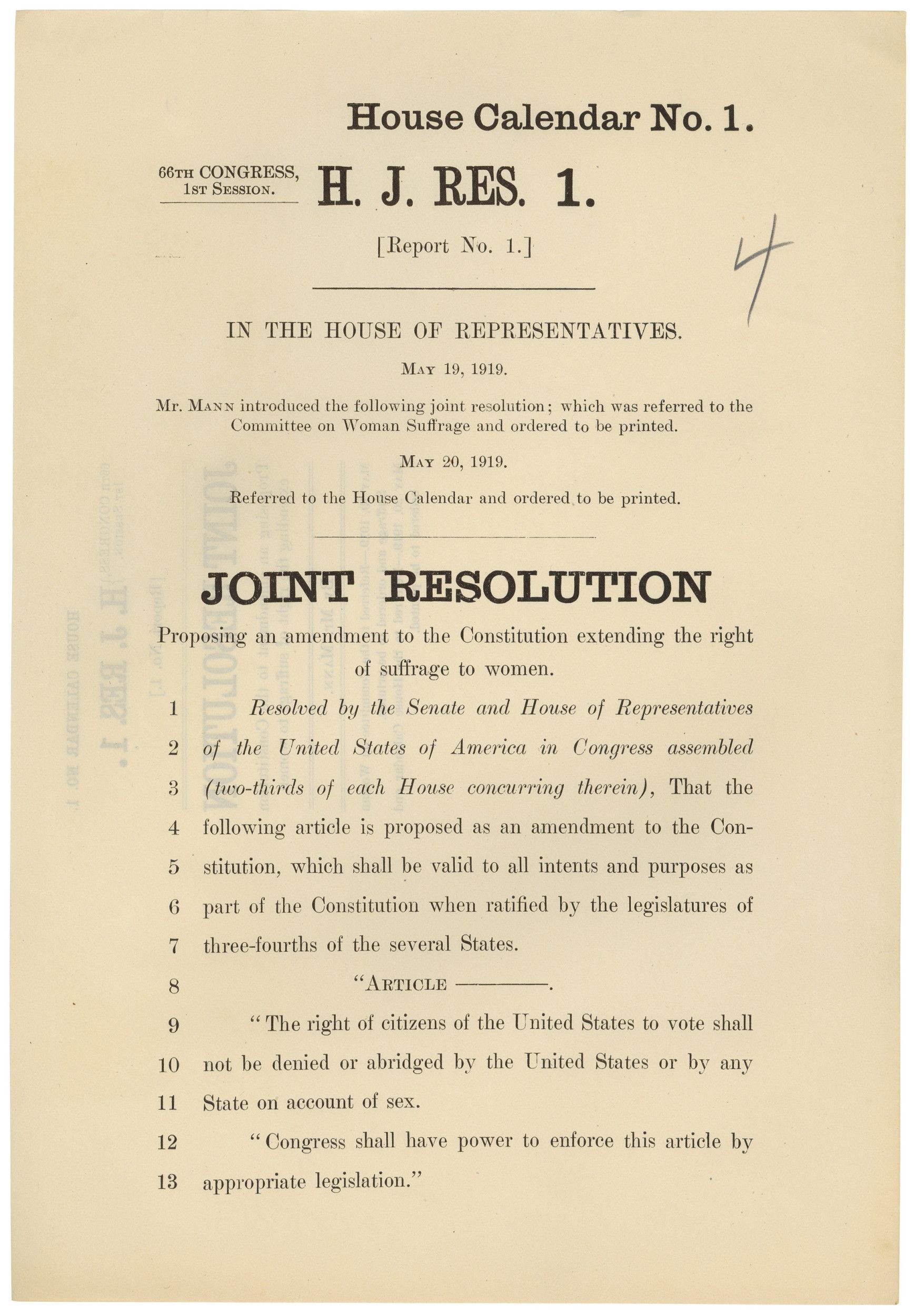
House Joint Resolution 1 Regarding the 19th Amendment
Page 2
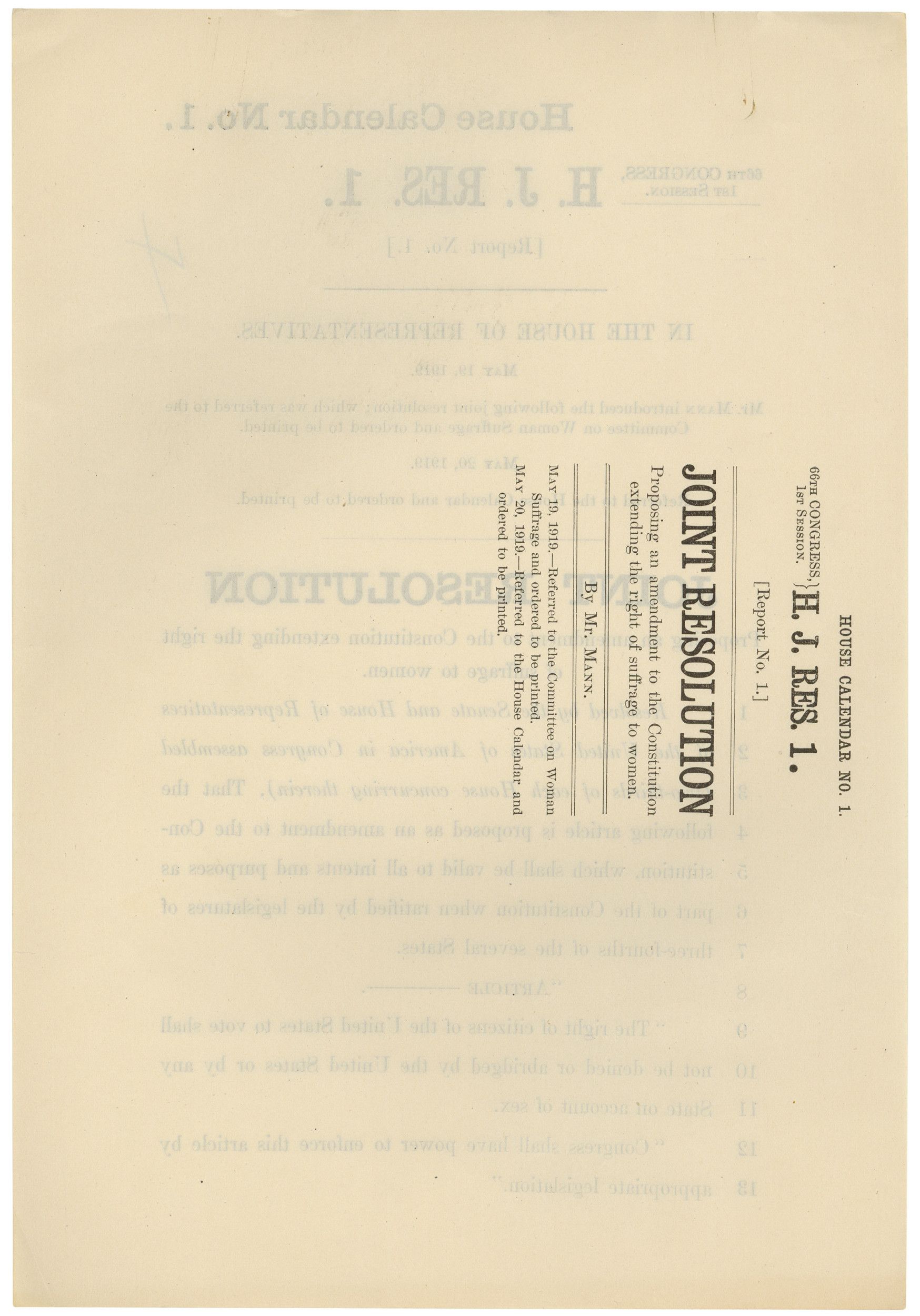
Document
Let the People Vote on It
Page 1
